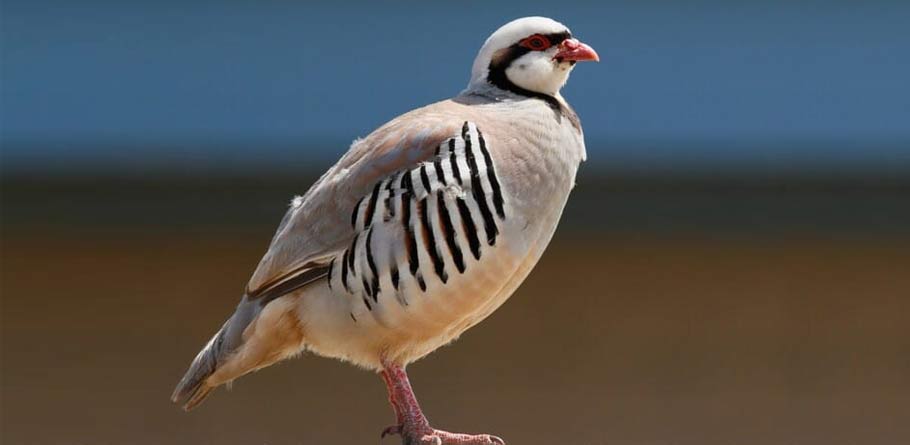The partridge bird, known for its vibrant plumage and distinctive call, is a fascinating species that has captivated bird enthusiasts for generations. Whether you are a seasoned birder or a curious nature lover, this comprehensive guide will provide you with a wealth of information about partridge birds. From their physical characteristics to their habitat, behavior, and conservation status, this article aims to be your go-to resource for all things related to partridges. So, let’s dive in and explore the wonderful world of these remarkable birds!
The Partridge Bird: An Overview
Partridge birds belong to the Phasianidae family, which includes various species of game birds. These medium-sized birds are known for their plump bodies, short wings, and rounded tails. Their plumage showcases an exquisite combination of earthy tones, including shades of brown, gray, and white, often adorned with intricate patterns and markings. Partridges are ground-dwelling birds, and their unique physical features make them well-adapted for life on the forest floor.
Species Diversity
The partridge family encompasses several species, each with its own distinctive characteristics. Some of the most well-known partridge species include the Gray Partridge, Red-legged Partridge, Chukar Partridge, and Rock Partridge. While these species share many similarities, they also exhibit subtle differences in appearance, habitat preference, and behavior. Understanding these variations can enhance your appreciation of these remarkable birds.
Habitat and Distribution
Partridge birds are found in various habitats across the globe, including grasslands, woodlands, shrublands, and agricultural areas. Their distribution spans different continents, with specific species being native to particular regions. For example, the Gray Partridge is widespread in Europe and Asia, while the Chukar Partridge is native to the rocky terrains of the Middle East and South Asia. Learning about their preferred habitats will increase your chances of spotting these elusive birds in the wild.
Behavior and Diet
Partridges are primarily ground-dwelling birds that spend most of their time foraging for food on the forest floor. They are omnivorous, with their diet consisting of a variety of seeds, fruits, insects, and small invertebrates. These birds have a distinctive scratching behavior, where they use their feet to uncover hidden food sources. Partridges are known for their synchronized cackling calls, especially during mating season, which adds to the enchantment of their presence in the wild.
Reproduction and Life Cycle
Partridge birds engage in intricate courtship rituals during the breeding season. Males often perform elaborate displays to attract females, including puffing up their plumage, spreading their wings, and making unique vocalizations. Once a pair forms a bond, the female constructs a shallow nest on the ground, where she lays a clutch of eggs. Incubation lasts for several weeks, with both parents taking turns to keep the eggs warm. Upon hatching, the chicks are precocial, capable of independent movement shortly after birth.
Predators and Threats
Partridge birds face various threats in the wild, including predation by larger mammals, birds of prey, and domesticated animals. Loss of suitable habitat due to agricultural practices, deforestation, and urbanization also poses a significant challenge to their survival. Additionally, hunting pressure and illegal trapping contribute to the decline of some partridge species. Conservation efforts, such as habitat restoration, predator management, and awareness campaigns, play a vital role in safeguarding these birds for future generations.
Conservation Status
The conservation status of partridge species varies depending on the region and specific species. While some populations remain stable, others face significant decline and are listed as vulnerable or endangered. International organizations and local conservation groups are actively involved in monitoring and protecting partridge populations through research, habitat conservation, and sustainable hunting practices. By raising awareness and supporting these initiatives, we can contribute to the preservation of these captivating birds.
Partridges in Culture and Symbolism
Partridges hold a special place in various cultures around the world. They feature prominently in folklore, literature, and art, often symbolizing traits such as courage, fertility, and wisdom. In some traditions, partridges are associated with the holiday season, with their image adorning greeting cards and festive decorations. Exploring the cultural significance of partridges adds an extra layer of intrigue to our understanding of these remarkable birds.
Birdwatching Tips and Etiquette
For bird enthusiasts and nature lovers eager to observe partridges in their natural habitat, it is essential to follow ethical birdwatching practices. Approaching birds quietly and maintaining a safe distance helps minimize disturbance to their behavior and habitat. Patience is key, as partridges may be shy and elusive, requiring keen observation skills. Carrying binoculars, field guides, and a camera can enhance your birdwatching experience and allow you to document these magnificent creatures.
Conclusion
In conclusion, the partridge bird is a captivating species with a rich diversity of physical attributes, behaviors, and habitats. Their striking plumage, synchronized calls, and intriguing courtship rituals make them a delight to observe in the wild. However, they face numerous challenges, including habitat loss and predation, which necessitate conservation efforts to ensure their long-term survival. By appreciating and respecting these remarkable birds, we can contribute to their preservation and inspire future generations to cherish the beauty of nature.
FAQ
- What is a chakor bird?
- Where do chakor birds live?
- What do chakor birds eat?
- How do chakor birds mate?
- How do chakor birds build nests?
- Do chakor birds migrate?
- What is the conservation status of chakor birds?
- What are some interesting facts about chakor birds?
- How long do chakor birds live?
- Are there different species of chakor birds?
Searches: Chakor bird habitat, Chakor bird behavior, Chakor bird diet, Chakor bird mating habits, Chakor bird nesting habits, Chakor bird migration patterns, Chakor bird conservation status, Chakor bird facts and information, Chakor bird lifespan, Chakor bird species variations, Chakor bird vocalizations, Chakor bird adaptations, Chakor bird predators, Chakor bird feathers, Chakor bird eggs, Chakor bird symbolism, Chakor bird watching tips, Chakor bird photography, Chakor bird sounds, Chakor bird conservation efforts.

